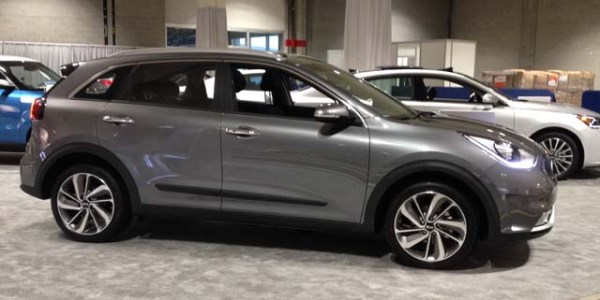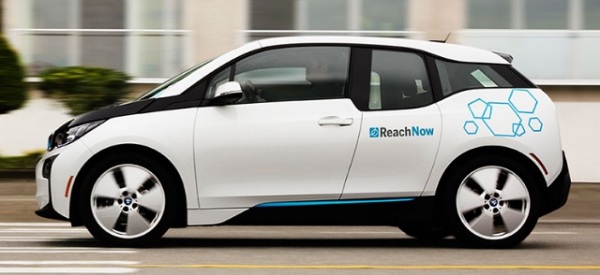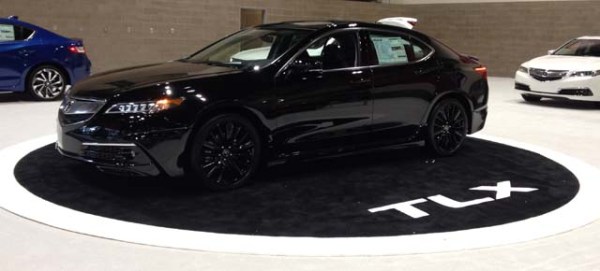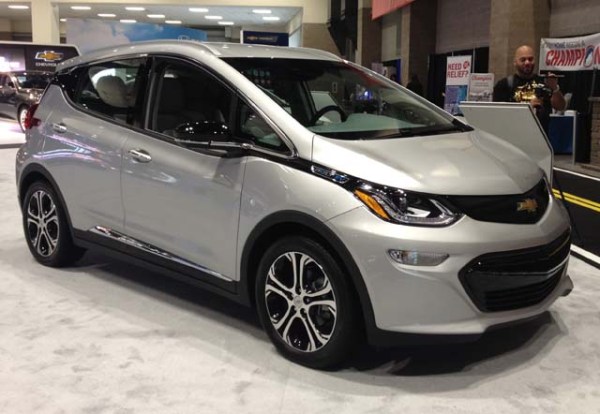2016 Seattle Auto Show

Envision a Buick crossover built in China (Orin O’Neill photos, except as noted)

Another year passes, another Seattle Auto Show comes to CenturyLink Events Center. As always, if cars aren’t your thing, you can avail yourself of a DECADE’s worth of scootery awesomeness elsewhere on this here blog. Still with me? Great! Read about the auto show after the jump.
I’m once again writing this in November. You’ll recall last year’s show was held in October, a development I found quite agreeable, not just for the better weather and longer daylight, but also a hopeful sign of more concept cars and maybe even a North American debut or two.
Oh, well. One of the biggest fallacies about Seattle (and to a lesser extent, Washington state) is the oft-stated idea that it’s a “progressive” place. Uh-uh. Things are done the way they are here because that’s the way they’ve always been done.
The Seattle Auto Show had always been in November because, well, it’s always been in November. Too many heads must’ve exploded in 2015. Or maybe people showed up at CenturyLink Field Events Center in November and found no auto show happening. Oh, well.
The industry sales freight train, going so fast for so long, has slowed to a crawl. In fact, badly enough to cause the factories producing Ford Mustangs, Chevrolet Camaros, Chevy Cruzes, and *gasp* Ford F-150s (the world’s best selling light vehicle, dontcha know) to take time-outs.
Sales of plain ol’ cars, however, have been in a nosedive for a while. Buyers have been opting for pickups, SUVs and crossovers. Because gas will always be around two bucks a gallon, right? What short memories people have.

Kia’s Niro hybrid crossover is my fave because its name is my name spelled backwards!
That lack of interest has become so acute, it has resulted in the death of the Dodge Dart, and impending deaths of the Chrysler 200 and Buick Verano. Others may follow… the Ford Taurus is said to be on shaky ground in the U.S., even though it’s big in China. The Rogue is now Nissan’s best seller; Honda has been selling more CR-Vs than Accords or Civics lately. The best selling Buick is the Encore. And so on.
Meanwhile, those economical hybrids and electrics and compact hatchbacks people leased a few years ago are starting to come off those leases. The effect is already being seen: a 2013 Prius that sold new for about $25K is worth half that as a trade-in; a 2012 Nissan LEAF will get you less than six grand (both according to Kelley Blue Book). Obviously, used car sellers will add their markups, but even at under $10,000, a used LEAF with half its battery warranty left becomes a pretty attractive proposition. Much more attractive than a vaporware Tesla Model 3 for upwards of $35 grand, for sure.

Photo: Seattle International Auto Snow
The usual six-figure luxury/supercar group on the mezzanine was joined this year by ArtCars4Kids, a group of pedal cars that served as artists’ canvases. The pedal cars that haven’t already been auctioned will be, at Seattle Children’s Home fundraisers.

Well, no, a smart fortwo (as always, no caps please) isn’t a hyper-expensive luxury ride. But it is a Daimler joint, and sat in the Mercedes-Benz area. The smart was new for 2016, and after having driven one, I’m happy to report it’s become a real car. It has car-size wheels and tires, it offers a choice between an actual manual and actual automatic transmission, and fit and finish are more in keeping with the askng price. Which is still far too much for what you get.
Smart USA sold exactly 418 cars in October, 2016. In the whole USA. A drop of 42% from the previous October. The fortwo is still the only model offered in the U.S. There’s a forfour, which is a normal-size subcompact hatchback (which would make a dandy basis for a subcompact crossover). Not for us, sadly.
The biz is trying to wrap its brain around other disruptions. BMW just opened its second attempt at “car-sharing” (aka, fetishized hourly car rentals) in Seattle with the debut of ReachNow. Unlike Zipcar and Car2Go, ReachNow features cars you’d actually WANT to drive: MINIs, 3-series BMWs and BMW i3 electrics.

If you live in Seattle or Portland, you can rent one of many strategically-placed BMW i3s by the hour (ReachNow)
Ford and General Motors are also getting involved in similar ventures, and all look to go nation-wide sooner rather than later. The subscription model is getting a close look, too (get a smart-like 2-seater for commuting, swap it for a full-size pickup for the Home Depot run, swap that for a van or crossover for when the in-laws come to visit, etc.).
With the average transaction price of a new car topping $30,000, buying is becoming more and more difficult for more and more Americans, 96-month car loans notwithstanding.
Volkswagen’s Dieselgate travails have come to a temporary stopping point: the company reached a settlement that will cost it almost $15 billion. If you own one of the affected vehicles, you can get details on your options here. What now for VW?

VW Alltrak: hey, it only took VW 20 years to knock off a Subaru Outback…
It seems VW no longer wants to rule the world; in the U.S., at least, it just wants to be Subaru. And why not? Subaru keeps on breaking sales records with its crossover-heavy product lineup; both companies have carved out loyal niche customer bases (VW is only still in the U.S. because of the number of Americans who will buy anything with a VW badge). VW has just introduced a midsize 7-seat crossover named Atlas 😛 which will be built in Chattanooga, Tenn.
Things are actually not as bad for VW’s other brands. These days, Audi (more-expensive Volkswagens with different grilles) is where the money is, the 4-ring brand pretty much unaffected by Dieselgate, even though Audis use the same engines as VWs, Audi being part of the Volkswagen Group (you knew that, right?). Audis sell well. It makes sense more sense for Wolfsburg to put the lion’s share of its attention and resources there.
OTOH, the idea of selling Skodas (less-expensive Volkswagens with different grilles) in the U.S. seems to be getting serious consideration. Given VW’s abandonment, more or less, of the lower end of the market, Skoda’s Citigo and Yeti would be perfect spiritual descendants of the Type 1 Beetle and Microbus, which is what VW dealers sold in 1970, VW’s best U.S. sales year, ever.

2017 Ioniq Electric
Hyundai is now the Official Car of the NFL, FWIW. While the Elantra is all-new for 2017, the Ioniq occupied center stage. While some have called it a Hyundai Prius, the Ioniq (pronounced “eye-oh-NEEK”) comes in three flavors: hybrid, plug-in hybrid, and plug-in electric. A sensible approach. And one I imagine other carmakers will embrace as time goes on.
A disturbing trend (to me, anyway) has been the growing tendency for the car companies to display cars that, well, don’t photograph so well.

There’s am Acura TLX in there, somewhere
The Acura TLX, above, was not unusual. There were others that were matte black, matte gray, and even a shade of metallic red that absorbs light like a black hole. Mazda and Lexus had their displays in the hall annex, which is not particularly well-lit in any case; almost all the Mazdas were light-absorbing red; the Lexi were nearly all a color product specialist Tom told me was called Atomic Silver, though it was more of a medium metallic gray.
They don’t seem to understand, this is the Age of the Selfie. Everybody’s got a smartphone. Everybody’s taking lots of pictures. I would think having the cars show up really well would be a good thing, but hey…

2017 Fiat 500X
At least Fiat gets it. This color is actually similar (if not the same) as the yellow offered on the new Vespa S. Off-road (or “off-road,” your choice) vehicles can be had in chocolate-milk and coffee-with-cream colors, each with matte black trim and wheels.

2017 Chevrolet Bolt
The most noteworthy car on the show floor was not on Chevrolet’s massive display platforn: the Bolt electric crossover sat off to the side. A Chevy spokesman explained they wanted it to be accessible; they wanted people to be able to touch it, to sit in it, to see everything.

Even what was under the hood.
The Bolt is most famous for its 238-miles-on-a-charge EPA rating, but it otherwise is a very familiar place to be. There’s lots of room inside, and really no indication that it’s all that different from, say, a Chevy Trax. The seats fit me like a glove, and getting in and out was quite easy for me and my pegleg. The Bolt assembly line is up and running as I write this, and the first examples are due in dealer showrooms by the end of the year. I’m eager to drive one.

2017 Chevy Cruze hatchback
Parked next to the Bolt was the new Chevy Cruze hatchback. Hatchbacks are becoming a thing in the U.S. again, a development about which I am pleased. The hatch shares the sedan’s 1.4-liter turbo engine, and a diesel will be available in model year 2018 (it will share this engine with the all-new 2018 Equinox, which occupied the massive all-singing, all-dancing LED display).
The star of the Buick display is the new Envision crossover, pictured in the lead photo. Maybe you’ve heard it’s built in China? (the VIN begins with an “R,” FWIW) Needless to say, this has caused much wailing and gnashing of teeth among Trump voters and Fox News Channel viewers, but as I’ve pointed out before, GM sells more Buicks in China than in the U.S. “When better cars are built, Buick will build them” went the old ad tag line. But it didn’t say where.
Here’s where: Cascada: Gliwice, Poland; Enclave: Lansing, Mich.; Envision: Yantai, China; Encore: Bupyeong, South Korea; Lacrosse: Fairfax, Ks.; Regal: Oshawa, Ont.; Verano: Orion Township, Mich.
President-elect Trump has said he intends to enact 35% tariffs on cars imported from China and Mexico. This could throw a wrench into Buick’s (and every other car company’s) plans, for sure.

2017 Buick Lacrosse
Buick has been turning out some really amazing cars lately. Their latest is the new full-size Lacrosse. I spontaneously kept saying, dayum, that looks good. It rocks Buick’s new signature grille, which if you squint can sorta kinda maybe make you think “Mercedes-Benz.” The Chinese regard Buick on the same level as Benz, BMW and Audi, so why not?
Buick will not be the only one selling a Chinese-built car in the U.S.

2017 Volvo S90
Volvo just announced it will be shifting production of its flagship S90 sedan to a brand new factory in Daqing. Production of the 60- and 40-series will also take place in China in the near future. You know that Volvo Cars is owned by a Chinese company called Zhejiang Geely Holding Group, right? Has been since 2010, actually.
You’ll notice it’s not the boxy, utilitarian device Volvos used to be. There’s more money to be made in the near-luxury segment.
Apparently, there isn’t going to be an Apple car after all. Well, cars are somewhat more complicated than iPhones. Attention once again turns to China, where the aforementioned Geely group announced a new brand called Lynk & Co.

Lynk & Co. 01 (Lynk & Co image)
The plan is to launch Lynk & Co vehicles in China, then expand to Europe and, yes, the U.S. Their initial product is a compact crossover (natch) called the 01. Lynk & Co makes this one stand out from the crowd by touting a new model of car-having: write one check every month, drive.
It sounds like that check would include things like insurance and registration. Your 01 is perpetually connected to the interwebz (here’s hoping when it arrives in the U.S. they will have figured out how to deal with the DDoS thing), so when it needs service, it contacts the nearest dealer, makes the appointment and arranges for a loaner.
If all this sounds like the ownership experience for a smartphone, you get a gold star. You would subscribe, rather than own; when a newer, zoomier 01 (or an 02 or 03) is introduced, you could swap your old one for a new one.
This is a business model the young’uns are totally comfortable with. They aren’t buying cars the old-fashioned way, at least not in the numbers their parents did. Given an average new-car transaction price well over $30 grand, this approach makes a lot of sense for just about everyone. The trick will be getting Americans over 30 to wrap their brains around it. ![]()




Comments are closed.